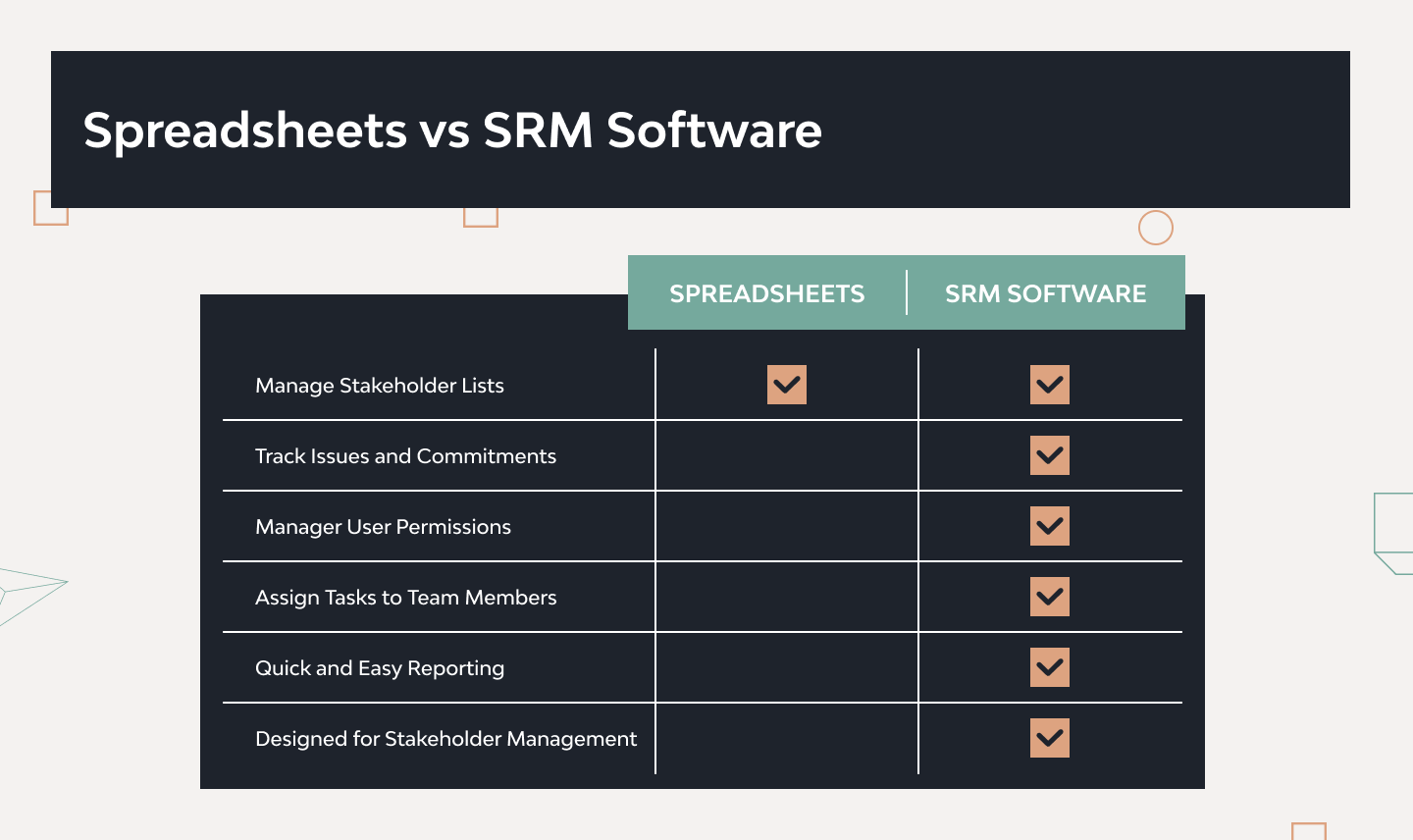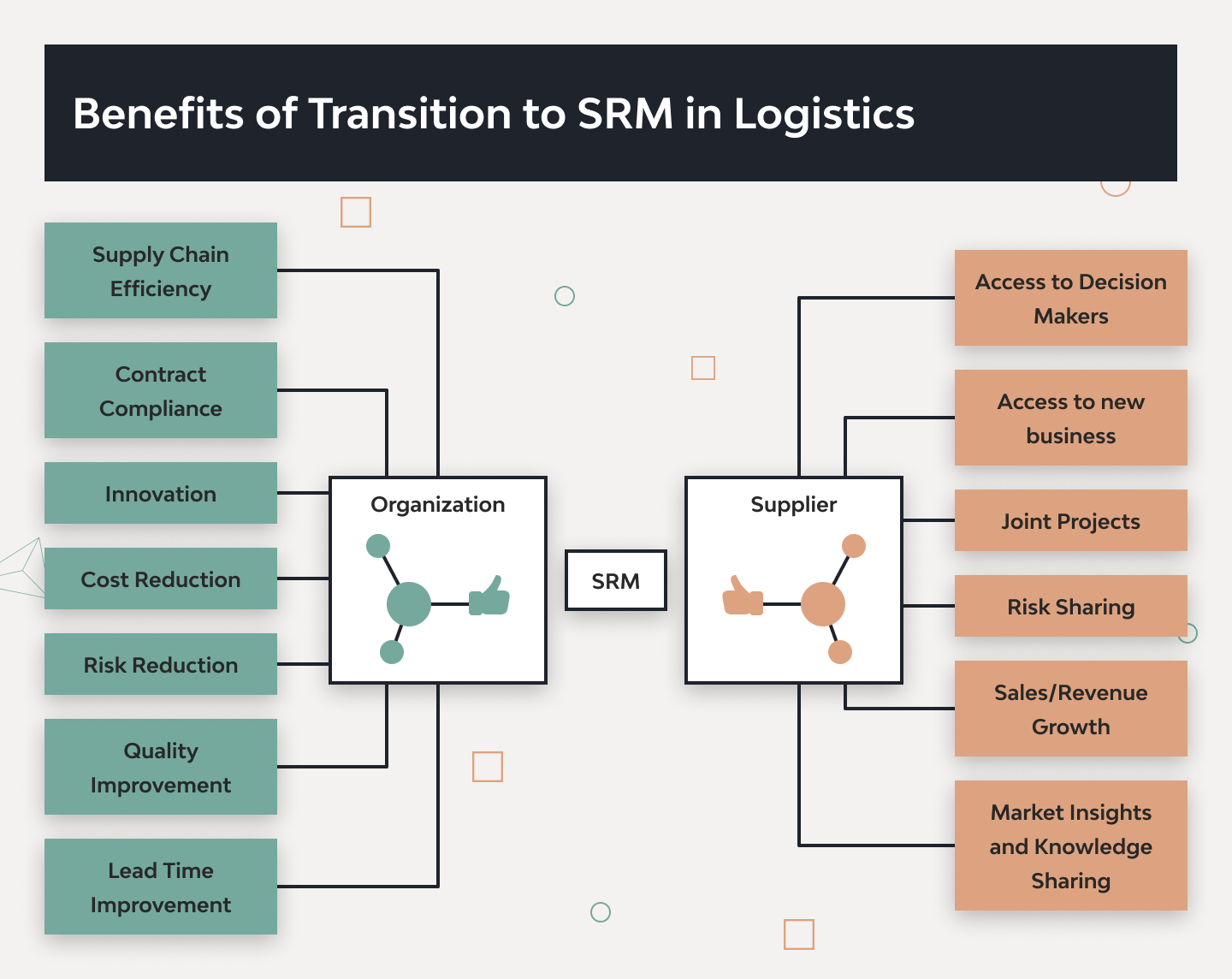How Supplier Relationship Management (SRM) Improves Logistics

Stepping into the logistics arena without the proper Supplier Relationship Management (SRM) tools is like trying to solve a Rubik’s Cube in the dark. It’s possible, but it’s more complicated than it might be.
The logistics industry has been wrestling with the limitations of manual processes for many years. Imagine navigating through a maze of Excel sheets and a deluge of emails. It’s a path fraught with errors, inefficiencies, and missed opportunities for collaboration. What if I told you there was a lantern to light the way? It’s high time to talk about Supplier Relationship Management (SRM), the beacon that promises to illuminate the path and pave it with efficiency and automation.
This article delves into how SRM emerges and transforms complex operations into streamlined processes. Through the lens of DjangoStars’ innovative solutions and real-life case studies, I’ll show you the transformative power of relationship management in supply chain in action, offering a glimpse into a world where logistics operations are managed and mastered.
The Problems with Outdated Logistic Management Systems
Excel and email might feel comfortable like an old pair of shoes. However, they’re not suited for a marathon. Let’s lace up and jog through why these popular tools might be holding back your logistics operations from running at their best.

Inaccuracy and Data Errors: The Stumble
Picture you’re trying to keep balance on a unicycle (stay with me here), juggling your inventory, orders, and shipments simultaneously. Using Excel, email, or chats for this high-wire act is like having someone toss you extra balls randomly. You’re going to drop one.
Manual data entry in spreadsheets is a tightrope walk. Even a tiny slip like a mistyped number or a misplaced decimal can lead to big tumbles in order accuracy and inventory levels. And let’s not even get started on the confusion when two versions of the same documentation in logistics start floating around.
Limited Visibility: Running in the Fog
Imagine you’re running a race, but there’s a thick fog over the track. You know you’re moving forward, but you can’t see the finish line, let alone your competitors. That’s the limited visibility you get when managing logistics with outdated tools. It’s tough to track where everything is in the supply chain when your data is siloed in different spreadsheets or buried in email threads. Making quick, informed decisions is like sprinting in fog-soaked slippery, and slow socks without a clear view.
Inefficiency: The Energy Drain
Relying on manual processes for logistics document management is like running with a heavy backpack. It slows you down and saps your energy. Typing out emails for every update, manually entering data into spreadsheets, and then cross-referencing everything just to make a single decision is exhausting.
Lack of Collaboration: Running Solo in a Team Sport
Finally, envision trying to complete a relay race, but everyone on your team is wearing noise-canceling headphones. They can’t hear when you’re trying to pass the baton, leading to dropped passes and confusion. This is what collaboration can feel like when you’re stuck using outdated logistics management tools. Coordinating with suppliers, stakeholders, and even internal teams becomes a game of telephone, where messages are delayed, distorted, or lost altogether. Effective collaboration is about passing information smoothly and quickly, something Excel, email, or chats are not equipped to handle in the complex, fast-paced world of logistics.
What’s an SRM System Anyway
SRM stands for Supplier Relationship Management. It’s all about ensuring solid and efficient relationships with your suppliers. Think of it as a tool that helps you and your suppliers work better together. It can ensure you get what you need when needed and everyone’s happy with the arrangement.
The Heart of SRM Systems
Knowing Who’s Who. An SRM system helps you determine which suppliers are the MVPs and which ones might need more coaching to become the best. It’s like creating a VIP list for your suppliers, so you know where to focus your attention.
Keeping Score. Just like in sports, you want to know how everyone’s performing. The role of SRM in logistics operations is to track suppliers’ performance based on what matters most to you. It might be delivery time, quality, or cost. This way, you can cheer on the high performers and help the others improve.
Playing It Safe. Every business faces risks, mainly when relying on others. An SRM system is your lookout. It helps spot potential issues before they become real problems and ensures your business runs smoothly without unexpected interruptions.
Teaming Up for Innovation. Great ideas can come from anywhere, even your suppliers. An SRM system helps you and your suppliers share ideas more quickly. It turns those lightbulb moments into real-world innovations that can set you apart from the competition.
Clear Chats. Misunderstandings can cause all sorts of headaches. SRM systems keep everyone on the same page. They ensure you and your suppliers understand each other clearly. This means fewer mix-ups and more getting things right the first time.
Contract Clarity. Think of this as keeping all your essential papers in one easy-to-find place. An SRM system helps manage contracts with all your suppliers. It makes it more straightforward to see what’s agreed upon when it’s time to talk about renewing and how to ensure everyone’s sticking to the plan.
The Need for a Large SRM System
Have you ever tried organizing a big family dinner where everyone has different dietary preferences, and you’re trying to keep track of it all without writing anything down? It’s pretty tough. That’s like managing a complex supply chain without the right tools. It can get chaotic fast. This is where a beefy SRM for better logistics system comes in handy.
Building a Team Spirit with Suppliers
Imagine if you and your suppliers were more like teammates working towards a common goal rather than just transaction buddies. An SRM system helps create this friendly, collaborative environment where you and your suppliers can easily share information, work on solving problems together, and find ways to do things better. It’s like having a group chat where everyone is focused on winning together.

What Makes a Large SRM System So Special?
Everything in One Place
Centralized data management is like having a super-organized file cabinet where all the essential stuff is stored. You can easily find contact details, contracts, and performance scores. This means no more digging through emails or chats for hours to find that one contract amendment or performance report.
Making Things Run Smoothly
SRM system to automate logistics is your best friend in ensuring that everything from placing orders to getting deliveries goes smoothly. Imagine just clicking a few buttons and having everything sorted instead of sending emails and making calls. That’s what SRM automation in logistics does. SRM in supply chain management makes the process smoother and faster for you and your partners.
Keeping an Eye on the Prize
Real-time visibility into shipments, inventory levels, and potential disruptions is like having a crystal ball that lets you see what’s happening now and what might happen soon. This way, you can make smart decisions quickly. You can think of rerouting a shipment to avoid a delay or ordering more of a hot-selling product before you run out.
Learning and Improving
Performance analytics are all about understanding how well your suppliers are doing and where there’s room for improvement. It’s like being a coach who cheers for their team and offers tips on how to play better. You can have meaningful chats with your suppliers about how to boost performance, which helps everyone do better.
Embracing the Transition to SRM in Logistics
Transitioning to a Supplier Relationship Management system can feel like moving to a new town. It’s exciting but also a bit daunting. You’re not quite sure where everything is, and you’re keen to make friends with the neighbors (your suppliers, in this case). But just like moving, there’s a way to make this transition smoother and turn your new place (aka your SRM system) into a home where everything works in harmony.
Conduct a Thorough Needs Assessment
Know Your Pain Points
Before you start packing, you need to know why you’re moving. In the world of SRM in supply chain, this means understanding exactly what isn’t working with your current setup. Is it the endless email threads? The struggle to keep track of supplier performance? Pinpoint these issues to know what you need in your new SRM home.
Wishlist Your Dream Features
Just like you’d want a sunny backyard or a big kitchen in your new house, list the features you dream of in an SRM system. This could be anything from automated order processing to real-time tracking of shipments.
Evaluate and Select the Right Solution
Shopping Around
Now that you know what you’re looking for, it’s time to hit the market. Look at different SRM systems, and compare their features, pricing, and how well they’ll work with your existing tools and systems. It’s like finding a house that’s just the right distance from work. It’s not too far, not too close.
Don’t Rush Your Decision
Remember, this is a big move. You wouldn’t buy a house without checking out a few options and thinking it over, so apply the same caution here. Make sure the SRM system you choose fits your needs and budget.
Data Migration and System Integration
Pack Up Properly
Moving your old data to the new SRM system is like packing your belongings. You want to ensure everything necessary comes with you, but it’s also a chance to declutter. Ensure the transition of historical data is smooth and the new system can talk to your existing software.
Test the Plumbing
Just as you’d check the plumbing before moving into a new house, test how well integrating SRM with existing logistics software goes. You don’t want any surprises once you’re all settled in.
Change Management and User Training
Welcome Party
Introducing your team to the new SRM system is like throwing a welcome party. It’s your chance to get everyone excited about the new place. Prepare your employees for the change, focusing on how the SRM system will make their jobs easier and more efficient.
Hands-on Training
Don’t just hand your employees the keys. Show them how everything works. Provide training sessions that cover how to use the new system’s features effectively. It’s like showing them how the dishwasher works so they don’t wash everything by hand.
Continuous Monitoring and Improvement
Keep an Eye on Things
Even after settling in, keep an eye on how well the SRM system works. Is it meeting your needs? Are there any issues that need fixing? Regularly analyzing how the system is used and looking for areas for improvement ensures your SRM system remains a comfortable and functional home for your supplier relationships.
Call in the Experts
Sometimes, you need to call a plumber or an electrician to fix things. Similarly, don’t hesitate to rely on professionals for help with your SRM system, whether for initial setup, training, or ongoing support.
Transforming Garbage Disposal with AI: A DjangoStars Case Study
Our adventure in reshaping the garbage disposal sector began with a dream shared by us and a forward-thinking client. This dream set us on a path to meticulously plan our project, piece by piece, during an in-depth discovery phase. Together, we crafted a vision for a project that was nothing short of revolutionary.
Three Core Objectives:
1. An Intelligent AI Engine
Our first challenge was to develop an AI engine capable of crafting optimized driving routes in real time, responding to day-to-day changes and resource availability. This technological marvel would ensure that drivers always take the most efficient paths. It leads to saving time and reducing costs in logistics using SRM.
2. Web and Mobile Applications
Next, we focused on creating user-friendly web and mobile applications for managers and drivers. These platforms were designed to introduce logistics document management automation and personalization previously unseen in the industry. They streamlined every aspect of the garbage disposal process.
3. A Seamless System for All
The crown jewel of our project was a comprehensive system that connected admins, managers, and drivers in a seamless digital environment. This solution promised to simplify planning, optimization, and execution. It made the garbage disposal process as smooth and efficient as possible.

The Bottom Line
We’ve dived into the dynamic world of Supplier Relationship Management (SRM) systems and highlighted their role in fostering collaboration, ensuring accuracy, and enhancing overall supply chain visibility.
Through the lens of a DjangoStars case study, we’ve explored the real-world application of AI in revolutionizing the garbage disposal process, making it more intelligent, efficient, and transparent.
DjangoStars is at the forefront of this innovation, blending logistics expertise with cutting-edge software development. Our journey began with a US startup driven to redefine the garbage disposal industry. This partnership highlighted our capacity to dream big.
- What are the biggest challenges logistics teams face relying on manual processes like Excel and email?
- The major hurdles include inaccuracy due to human errors, limited visibility into the supply chain, inefficiency from time-consuming manual entries, and a lack of collaboration across the network of suppliers and stakeholders.
- How does SRM help improve communication and collaboration with suppliers in the logistics process?
- SRM systems enhance communication and collaboration by providing a centralized platform for information sharing, real-time updates, and streamlined workflows, ensuring all parties are aligned and informed throughout the supply chain process.
- What key functionalities of an SRM system benefit logistics operations the most?
- Key functionalities include strategic supplier segmentation, performance management, risk management, collaborative innovation, enhanced communication and transparency, and efficient contract management. They are all designed to optimize logistics operations and supplier relationships.
- What key steps should businesses take to successfully implement and integrate an SRM system into their logistics operations?
- Businesses should conduct a thorough needs assessment to identify pain points and desired functionalities, carefully evaluate and get ready for choosing the right SRM system, ensure smooth data migration and system integration, prepare employees through change management and training, and engage in continuous monitoring and improvement to adapt the system for optimal performance.
- How can transitioning to an AI-powered SRM solution, like the one developed by DjangoStars for garbage disposal management, benefit logistics companies?
- Transitioning to an AI-powered SRM solution can significantly benefit logistics companies by automating and optimizing route planning, enhancing operational efficiency, reducing costs, and improving decision-making through real-time visibility and analytics. Such a solution enables a more agile, responsive, and customer-focused approach to logistics management.









